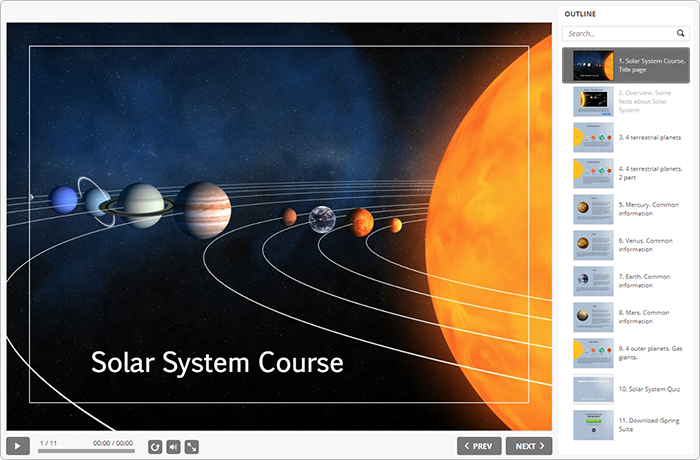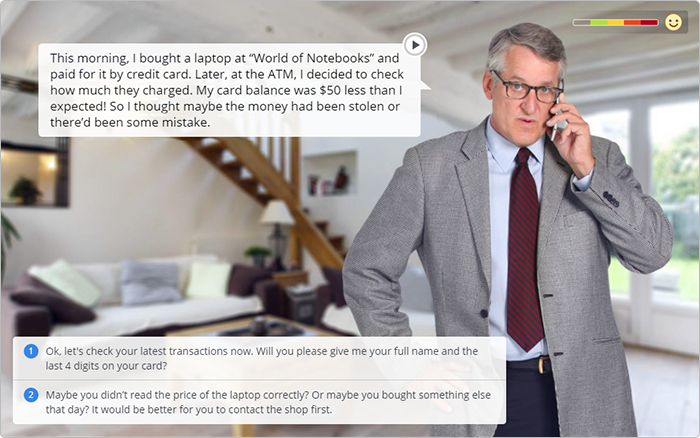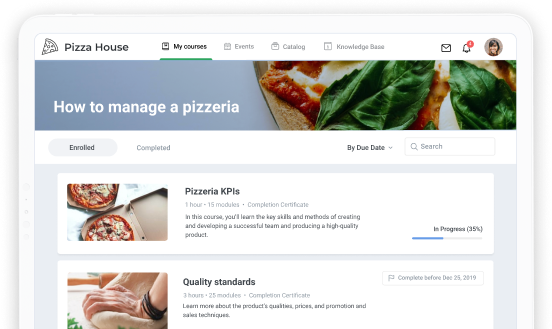How to Create a Mobile Learning Strategy in 5 Steps

More than 67% of organizations already offer mLearning in some form, and the trend is growing. If you are still not among them, this complete guide on how to create a mobile learning strategy will help you lay the foundation for a successful mLearning deployment.
First, let’s see why a good strategy is such a great idea.
Benefits of Implementing Mobile Learning Strategy
There are multiple benefits to implementing mLearning in your organization. It’s easier to access, it has massive potential for increased engagement and motivation. Check out what can be gained from employing a mobile learning strategy below:
- Since the outbreak of the Covid-19 pandemic working from home has become the norm for millions of workers in the USA and worldwide. Plus, there are a lot of employees who work in the field or take business trips. Mobile learning allows learners to study anytime and anywhere.
- It’s convenient to train staff face-to-face if all your employees work in the same office, or at least in the same city. For an extended enterprise with branches in different states, classroom sessions can consume significant time and money. With mLearning, you don’t need to gather all the employees in one place.
- Not all employees can stay in the office after working hours to study or go to another city for a training event. However, they are likely to find time to take a short course at lunch or listen to a podcast during a morning walk.
- Deloitte Millennial Survey indicates that millennials will comprise 75% of the global workforce by 2025. Unlike previous generations, they are almost glued to their gadgets and feel much more comfortable being online than in a classroom. mLearning seems to be an ideal solution for millennials.
- Many people consider traditional learning boring and complicated. They have this idea straight from high school, so it’s difficult to motivate them to train. With gamified e-courses they can amass points, ascend levels, and acquire other bonuses for completed tasks. Employees come to realize that learning can be an interesting and engaging experience.
- Most adults usually have access to multiple devices including desktops, laptops, cellphones, and tablets. Mobile learning designs support all devices, and allows for courses to run seamlessly across all platforms. This gives users the ability to learn on any device: using a computer at the office, from a laptop at home, or from anywhere using a cellphone.
- Unlike traditional learning, mLearning can be built to fit multiple learning styles. This has a large potential to increase learner engagement.
Let’s say you already understand the advantages of mLearning and have firmly decided to add mobile to your company’s training programs, but what’s next? Don’t be hasty. Taking the time to create an mLearning strategy before plunging into training development can pay dividends for years.
Step 1. Define Your Business Strategy
Mobile learning for its own sake is not necessarily a good idea. At the very beginning, it’s important to work out a business strategy, and establish learning goals. Ask the team, “What business problem does the training need to solve?” This will help you understand exactly why you need mLearning and how it will solve that business problem.
Evaluate the situation in your company and analyze your challenges — describe what problems you have, which ones training can improve, and how they affect the company’s results.
At this stage, it’s also important to think how learners will access the training material. Do they work remotely and require “point of need” training support? Do they travel often and need access to training materials from planes or other places with limited or no internet access? Do they use devices with the same operating system or is there a mix?
“By observing and understanding the learners and their needs you can identify:
1) how to seamlessly and effectively integrate training and/or support into their routine;
2) how to really facilitate a task for them by providing just-in-time assistance;
3) how to use context itself to enhance the learning experience.

Case Study: How a Houston-based real estate company implemented mLearning
Situation: The company needed to train 5,000 employees. It was necessary for them to learn on the go from any part of the world. The company’s management found out that most employees had iPads.
Solution: The company needed an LMS with a mobile app that would allow users to download the content, view it offline, and synchronize progress with the system when they next accessed the internet. All content was to play correctly on iPads regardless of connectivity.
Step 2. Set Up a Team
To achieve good results, you need to build an effective team. Here is a complete list of people who can help you implement and develop mobile learning in your company. You don’t necessarily need to have them all on staff; it depends on your actual demands.
- Project manager. Develops the mobile learning strategy and oversees the full life cycle of the project.
- Business unit managers. The people who propose the problems that mLearning can solve. They can also be the champions that remove roadblocks to your project, as they are typically the beneficiaries of the work. You can usually find them among HR leaders or heads of other departments. Business unit managers can be helpful while setting the goals for mobile learning and creating the measurement systems that will define success.
- Stakeholders. These are people who want to help you initiate this project. They may be from within the organization or outside (e.g. partners, consultants, suppliers).
“It’s important to involve such people because they can go out and advertise for your project, help spread information about mobile learning, and get feedback from your audience. They may also be able to provide content.”

- IT group. Before implementing mLearning, you need to consult with IT specialists on all the technical questions. What devices are going to be used: company owned or BYOD? What is the security policy in your company and how can it influence your mobile learning strategy? What kind of software do you need to buy? Who is going to deploy it?
- Course developer. This is a person who creates courses using an authoring tool. You will need them if you are going to build learning content in-house.
- Coach/SME. This is an individual responsible for providing training and guidance. Often they also act as subject matter experts (SMEs) who know what needs to be included in an eLearning course and what can be left by the wayside. Coaches offer useful learning material to employees and instruct course developers (if there are any) on the content.
- LMS administrator. This is somebody who manages the system — adds new users, uploads the content and assigns it to the learners, tracks users’ results and helps them with any technical issues.
Step 3. Decide on the Learning Content
You’ve determined your mobile learning goals, found an appropriate solution, and even built the team. Now, it’s time to solve all the issues concerning content.
Types of learning content
We talked to Mayra Aixa Villar, an experienced eLearning expert and instructional designer, and found out what types of content are the most suitable for mobile learning.
1. Online courses and quizzes
With the help of online learning courses, you can provide training on a wide range of key subjects. If you practice blended learning, you can use a short mobile course either as pre-work or post-training content. Quizzes can be included in the courses, or be standalone assessments.
If interested, learn more about how to create an online courses.
2. Video
95% of companies use some kind of video for educating employees. For mLearning, it is the most popular content type for two reasons. People are more comfortable consuming content through videos than reading or listening to it. Videos pack a large amount of information into a short space; this shortens the training time.
3. Podcasts
Audio content is a very useful format for mLearning. Although it lacks visual elements, there are many situations where a visual component either isn’t much help (e.g., interviews with subject matter experts) or can be distracting (e.g., while driving). In such cases, podcasts can be a simple and effective mLearning solution.
In-house vs. off-the-shelf
Remember that content is your top priority. If you want to include learning courses into your training program, you need to decide whether you will build courses in-house or purchase off-the-shelf courses.
You will definitely have to create courses in-house if:
- You want to incorporate different elements in the course that reflect your company field, e.g. characters, locations, and images actually used in your organization.
- You are going to create organization-specific content. For example, your company is launching a new clothing line. The courses will include specific information about the products, price lists, target markets, etc.
- Your audience is very large. Most off-the-shelf eLearning vendors license courses “per user”. If you need to train a large workforce, your licensing costs might outweigh the cost of building courses yourself. In addition, you need to buy courses regularly, whereas you invest in an authoring tool only once.
- You are going to update courses frequently. In such a situation, it will be much easier and cheaper for you to build courses in-house.
Tips for creating good training courses
Here are a few tips from Mayra about how to create useful and ‘sticky’ learning content.
1. Focus on the key elements of a truly mobile learning experience: the end-user, their need(s), and the context of performance (Villar, 2013). A truly mobile experience has the potential to reach the learner at the exact moment of need and in the environment where the information is most relevant and useful.
Let’s take, for example, mobile Augmented Reality applications which provide informational support for a focused task in a specific environment/location.
“I cannot stress enough the importance of considering these 3 key elements of a mobile learning experience as they help you envision solutions that make technology work for the enhancement of the learning experience rather than just using it for the sake of it.”

2. Break the content into bite-sized chunks. It is essential for the mobile learning content to be brief because of small mobile screens. Plus, an average person can’t absorb information well for long hours.
You probably know that the length of most world-famous TED talks is 18 minutes. The organizers of TEDx events chose this format after they had conducted research. It turned out that 18 minutes is long enough to be serious and short enough to hold people’s attention. You can make lessons even shorter. “Microlearning” modules on a topic or two are often only 3-4 minutes.
3. Make learning fun. A number of surveys indicate that around 51% of digital media, including games, is consumed through mobile devices. That’s why it’s reasonable to include game mechanics in learning activities and adapt them for smartphones and tablets.
Here are some gamified mechanics that can be used for mobile learning courses:
- branching scenarios
- interactivity
- versatile characters
- locations
This is an example of a dialogue simulation with branching scenarios created with iSpring Suite.
According to research, game-based learning stimulates active training and leaves learners yearning for more.
4. Personalize learning content where possible. If a learner understands that the content has a connection to their life, they become even more engaged. Make them think about how the ideas presented in the training material affect them personally and at work, and motivate them to find out on their own how these ideas apply to their lives. Explain the “Why” as well as the “How”.
Step 4. Choose Training Tools
You can’t implement mobile learning if you don’t have the tools.
Learning Management System (LMS)
You may have a training course ready for viewing, but without an LMS it won’t be easy for you to share the content, and almost impossible to track learners’ progress. To get deep into how to select a learning platform, see this article.
You may purchase an LMS with gamification, talent management, or even eCommerce. It all depends on your business needs and learning objectives. However, don’t forget that your employees will view the content from their smartphones and tablets, so it should look nice on all mobile devices. Before purchasing a platform, make sure that it supports fully responsive content that can adapt to the screen size and orientation of any device.
The ideal solution is an LMS with a mobile app that allows learners to take courses offline. Your employees will be able to view their content wherever they are, even with no internet access. When reconnected to the internet, their smartphones and tablets will automatically update the LMS with their progress.
For example, iSpring Learn LMS has a free mobile app for learners to take courses anytime and anywhere, even offline.
eLearning Course Authoring Tool
If you are not going to build courses in-house, you may skip to the following step. Otherwise, you will need a tool for creating courses.
Some LMSs have a built-in editor that allows you to create simple quizzes and courses. But, if you want to create high-quality ‘sticky’ content, you will need a powerful authoring tool that allows you to build engaging courses with interactions, branching scenarios, embedded videos, and screencasts.
For mobile learning, it’s also important that courses can be viewed on multiple devices with different browsers and operating systems. So, don’t forget to find out about this when choosing an authoring tool. For example, with iSpring Suite, you can create courses that fit different screen sizes and orientation, and can be viewed on any devices.
To get a full insight into choosing an authoring tool, go straight to the checklist.
Possible constraints
We’ve mentioned that both the content and the learning platform must work well on small screens. However, not all LMSs and course editors are perfectly compatible. For example, you might have problems uploading courses to the platform or tracking your employees’ results.
To avoid compatibility problems, test the LMS and the authoring tool as a bundle. Make sure a course can be uploaded and maintained easily using your learning platform, or buy an LMS with a bundled authoring tool.
For example, iSpring Learn LMS is seamlessly integrated with iSpring Suite. This integration lets you enjoy advanced reporting capabilities, excellent content playback, and instant one-click publishing. Integrated systems can streamline workflow.
Step 5. Make Up a Detailed Implementation Plan
After you’ve defined your mobile learning strategy, it’s high time to draw up a plan that contains step-by-step actions for implementing mLearning in your company. The plan must include major milestones, deadlines, and the people involved in each activity.
“When putting together an implementation plan, you have to make sure that everything you do is dynamic and adaptable. You have to anticipate any additional decisions and information that may arise later in the project.”

Include a pilot project into the roadmap. Create a training course, upload it to the LMS, and ask a small group of employees to view it. The pilot will help you measure the results and get feedback from learners about whether they feel comfortable with mLearning. If necessary, you will be able to make some corrections and improvements.
Tips to Make Mobile Learning Even More Effective
Mobile learning can definitely provide amazing results for your company. Here are some tips that will help to make it even more effective and engaging.
- Use game mechanics. Make learning fun by adding gamification. With most LMSs, you can assign points based on grades and test completion and award badges. You can also provide your learners with leaderboards where they can track their learning results and see how they stack up against their classmates.
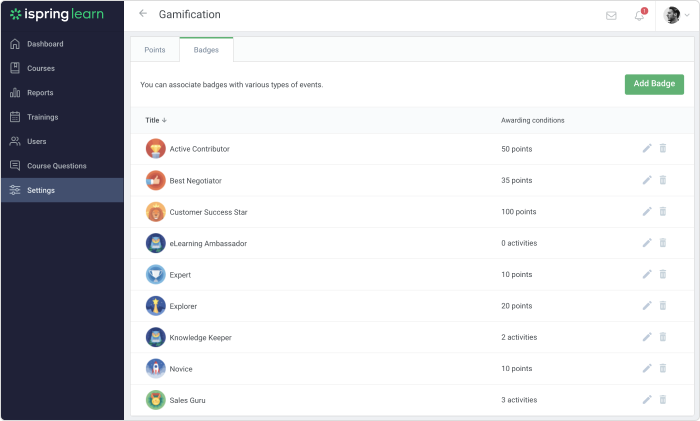
- Diversify your content. There are many types of content that can be used to fit different learning styles, provide situational training, and convey information. For example, you can ask your employees to watch a video tutorial to get an idea of a new product and its features, have them take an online quiz to check their understanding of the material, or offer a dialogue sim to help them master their communication skills.
- Allow for breaks. Configure your courses to give learners the ability to pause their course at any point and resume where they stopped without losing any of their progress. This is handy if you’re presenting a large course, as not all of your learners may be able to complete it in one go.
- Gather feedback. Get feedback from your users after the completion of a course. This is a great way to evaluate how any course is doing and if it needs to be improved. The opportunity to voice their opinion gives your learners a chance to feel more valued and engaged in the process.
- Reward your learners. Recognize your learners’ achievements by awarding a certificate after course completion. Happily, many corporate LMSs let you do this automatically. A certificate is an indicator that all the hard work and time that they put into the course did not go unnoticed.
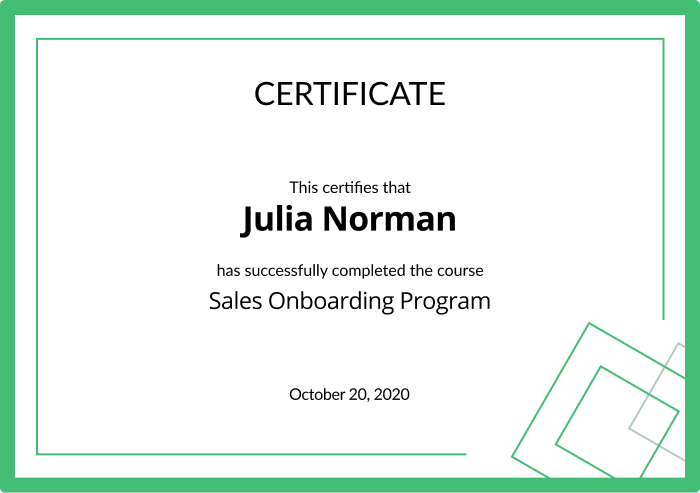
By following these 5 steps and the tips that we have provided, you will be able to plunge into mobile and deliver an effective mLearning strategy. To make it even easier, we created a Sample Project Implementation Plan. It’s fully editable, so you can make changes. Download the template for free here. It can offer you crucial support while creating a mobile learning strategy.
Case Study
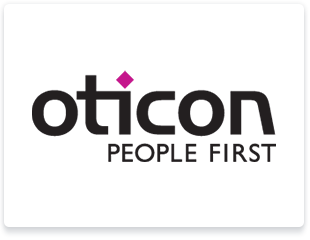
Oticon
With iSpring LMS, Oticon, Inc., conducts product knowledge training for employees and provides onboarding for new hires.
“With mLearning, our employees can take training whenever their schedules allow. iSpring’s mobile app with offline capabilities is especially useful for our account managers and field trainers, as it allows them to download courses to be available offline so they can take training anywhere, anytime.”
We would like to express our gratitude to the following eLearning experts for sharing their knowledge:

Debbie Richards,
president of Creative Interactive Ideas
Debbie Richards, president of Creative Interactive Ideas, is honored to be on the list of eLearning Movers & Shakers for 2018. Debbie serves as a consultant to corporations and organizations and supports clients in the area of instructional technology. She works with organizations to design, develop, and deliver technology-based adult learning programs with measurable impact.

Mayra Aixa Villar,
instructional designer and eLearning consultant
Mayra Aixa Villar, bilingual instructional designer, eLearning consultant, and founder of Creative Design of Learning Experiences. Mayra specializes in identifying the core message of a training or communication solution, the relevance of the content for the audience, and how technology can enhance the whole experience. She has been teaching, researching and designing educational products for 15 years.
